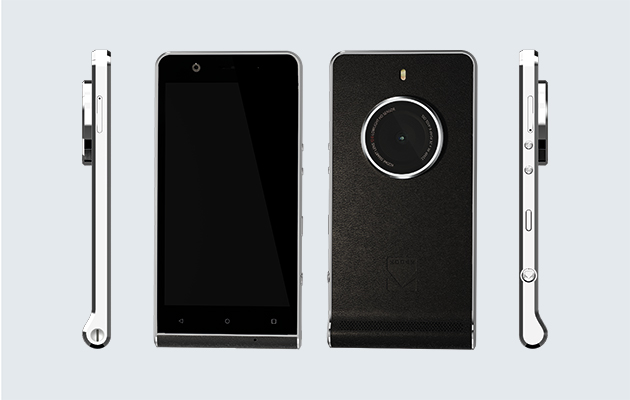|
|
||
|
The camera company takes on its smartphone rivals with the launch of a photogenic competitor A mobile phone can perform many of a camera’s functions, but the bland rectangular slabs we carry in our pockets don’t elicit the pleasure that generations of photography enthusiasts have derived from handling SLRs – their appearance, tactility and responsiveness, not to mention the smug thrill of pompously fiddling with knobs and dials while others nearby simply point and shoot. Amateurs. This sense of expertise – whether real or imagined – is perhaps what Kodak had in mind with its latest design, a daring foray into the competitive world of smartphones. The Ektra implicitly accepts the dominance of mobile-phone cameras, but seeks to offer some of the traditional experience and craft of photography to those unlikely to buy a standalone camera. ‘We wanted to create a camera-centric smartphone, differentiated by hardware and software designed to give a premium camera experience,’ Kodak’s brand director Dany Atkins says. With its protruding lens and grainy leather back, the Ektra is influenced by a 1940s camera of the same name. ‘There’s something about things like a leather wallet or Zippo lighter – the way they age and their story. We’re looking at building electronic products that people want to keep.’ Unlike most smartphones, the Ektra allows you to control exposure, focus and shutter speed, while the lens coating lets more light reach the sensor. ‘It’s also styled to look like a camera, from the barrel on the right, reminiscent of 35mm cartridges, to the shutter button.’ Kodak also offers a printing service as part of the package. ‘You get back a little of that magic of a yellow envelope arriving through your letterbox,’ Atkins says. Reviving the camera as a coveted item seems an apt challenge for the company, which became synonymous with home photography after coining the phrase ‘a Kodak moment’ in the 1960s, but struggled to adapt to the digital era. Today, it’s banking its future on integrating old and new: it has several products in the pipeline, following the relaunch in 2016 of its iconic Super 8 camera and the revival of a version of its 1970s logo shortly after. But it’s not clear whether the Ektra can become a device ‘to keep’. At a price comparable to the iPhone, it’s unlikely to break the biennial phone upgrade cycle. And, until mobile-battery lifespans improve, many may see the detachable lenses launched recently by Hasselblad and Zeiss as more practical solutions. But the journey back to more beloved, long-lasting everyday possessions is one worth making and, with the Ektra, Kodak is signalling this ambition. Now the technology just needs to catch up.
|
Words Debika Ray |
|


















